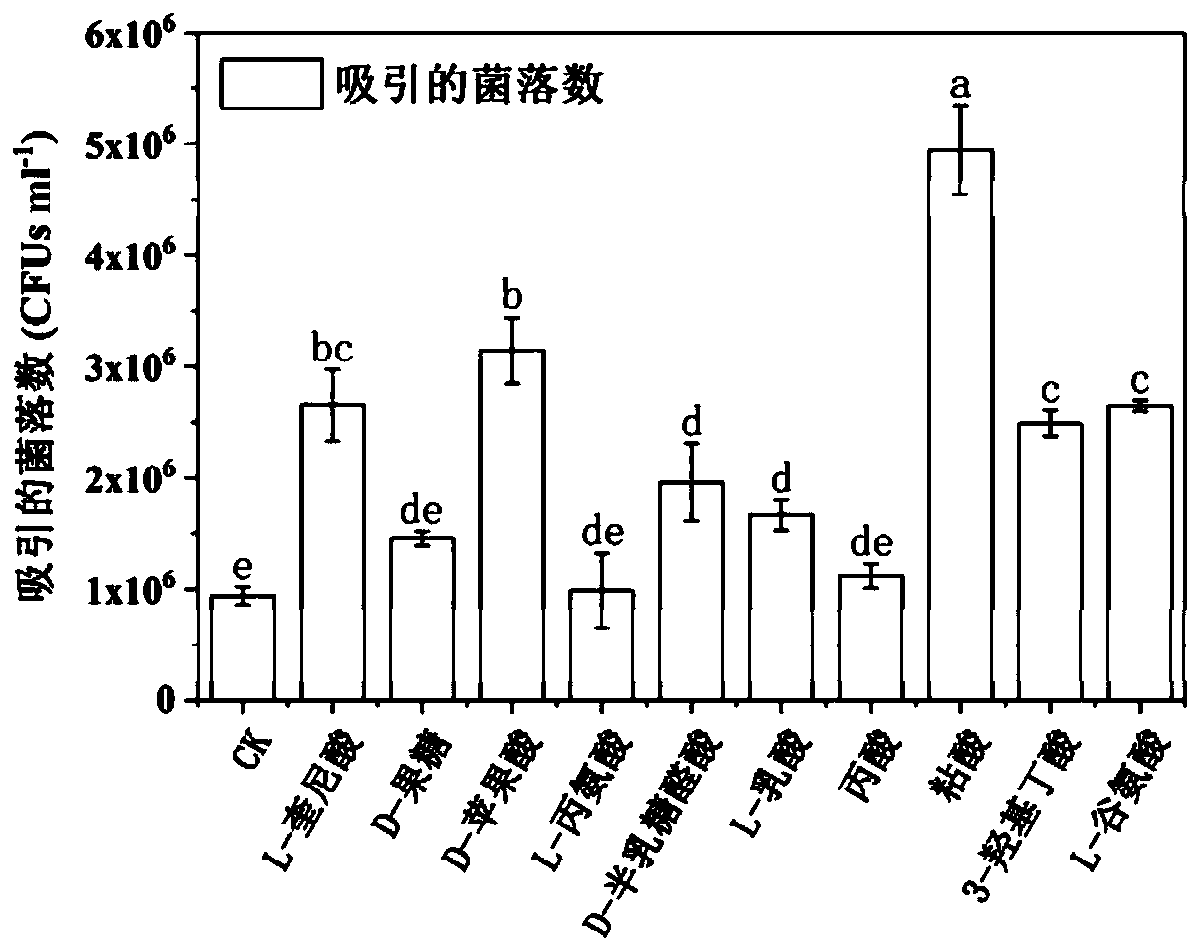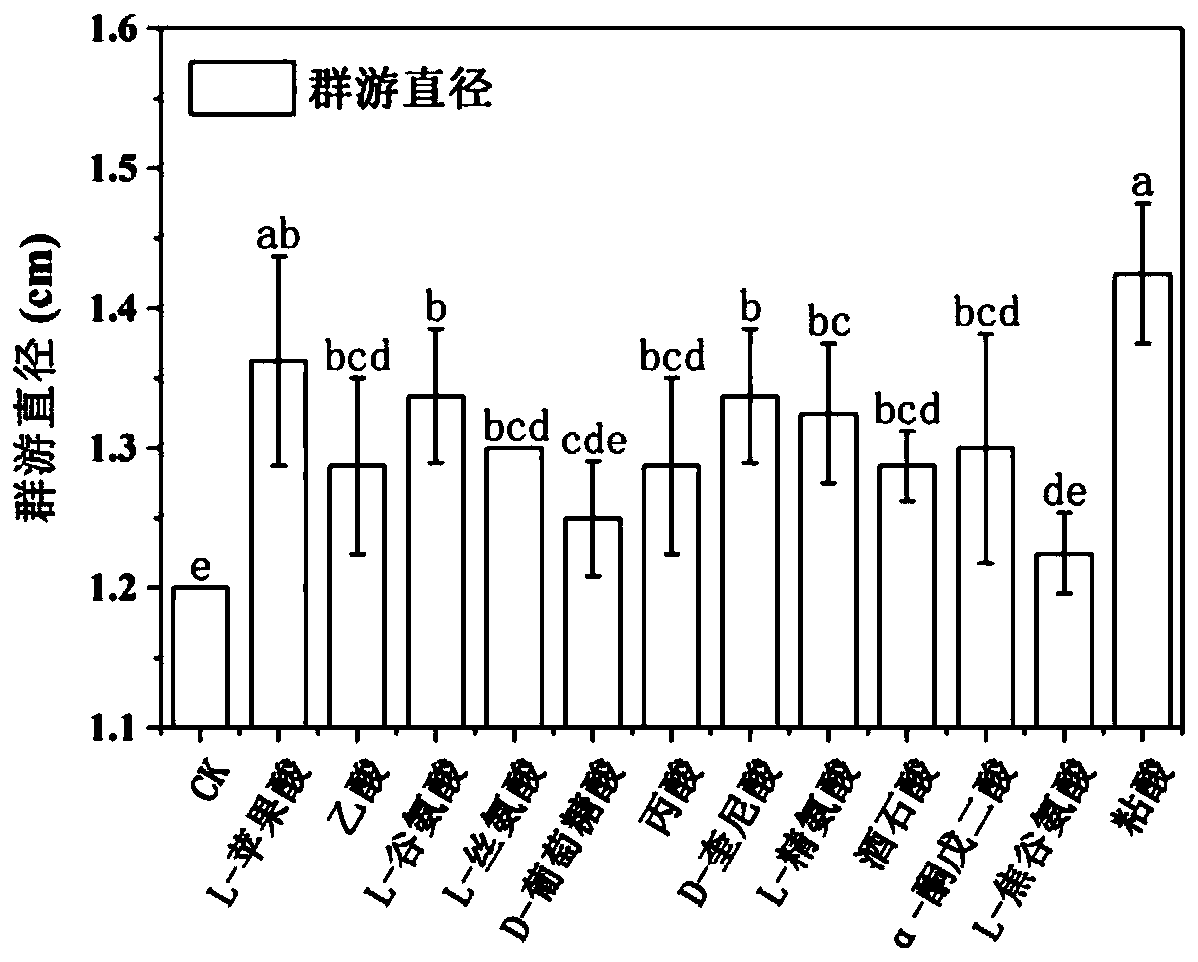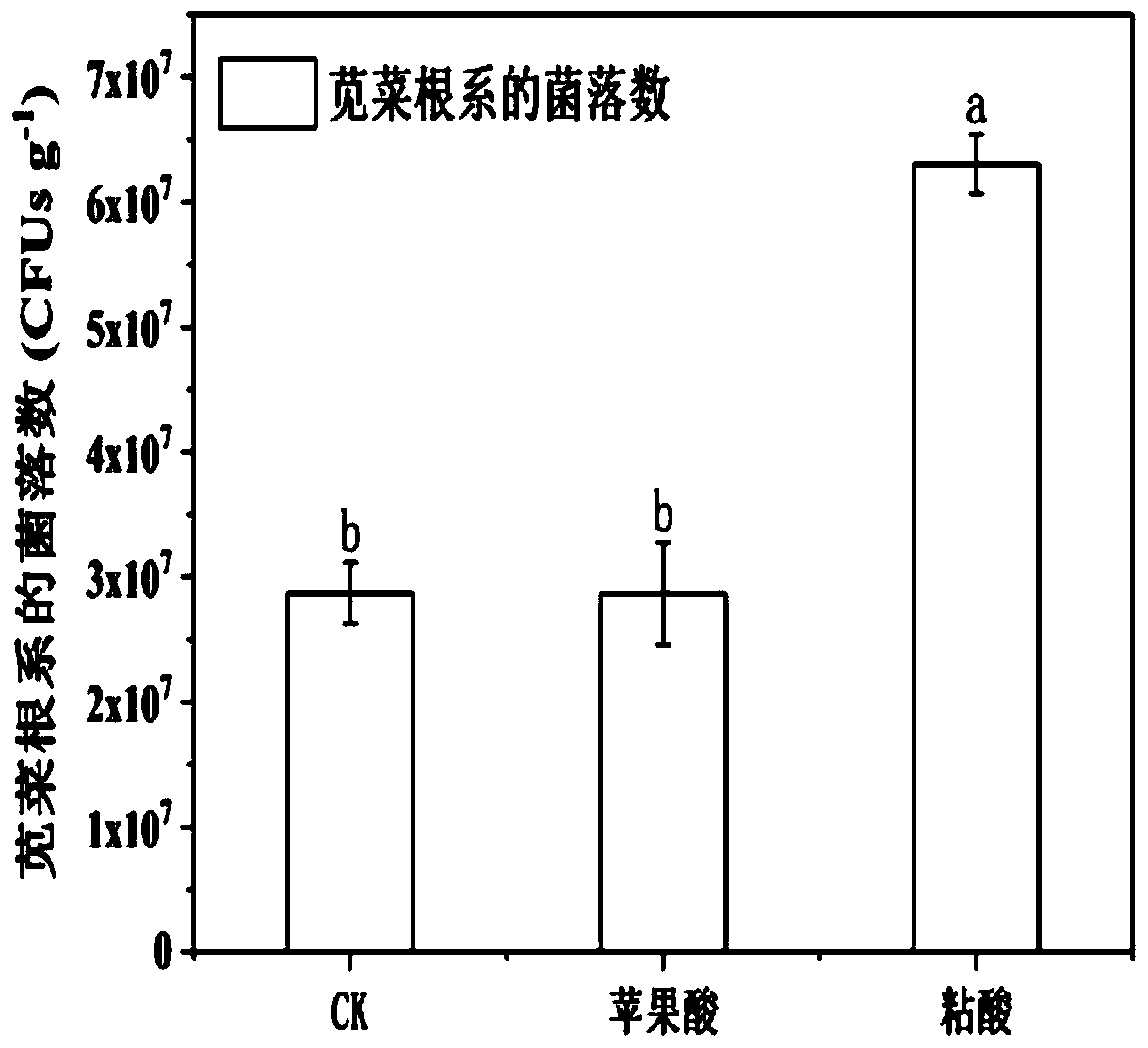Method of promoting colonization of delftia tsuruhatensis at plant rhizospheres
A technology of Crane Haneda Delft and plant roots, which is applied in the field of promoting the colonization of Crane Haneda Delftia in the plant rhizosphere, can solve the problems that have not been solved, and achieve the goal of increased gene abundance, good application value, and enhanced growth-promoting effect Effect
- Summary
- Abstract
- Description
- Claims
- Application Information
AI Technical Summary
Problems solved by technology
Method used
Image
Examples
Embodiment 1
[0038] Example 1 Chemotaxis of organic acids in different root exudates to Delftia 10492
[0039]The present invention selects 10 kinds of organic acids (L-quinic acid, D-fructose, D-malic acid, L-alanine, D-galacturonic acid, L-lactic acid, propionic acid, mucic acid, 3-hydroxybutyric acid and L-glutamic acid), to study its chemotaxis to Delftia crascens, the specific experimental methods and experimental results are as follows:
[0040] 1. Experimental method
[0041] Use a pipette to draw 100 μL of Delftia 10492 bacteria liquid, use a syringe to draw 200 μL of an organic acid solution with a concentration of 30 μm / L, and set sterile water as a blank control. After inserting the syringe into the tip of the pipette, let it stand in the ultra-clean bench for 2 hours, take out the organic acid solution in the syringe and dilute it with sterile water for 10, 10 2 、10 3 、10 4 、10 5 、10 6 times, spread to LB medium, set up 3 parallels, place them in a biochemical incubator, ...
Embodiment 2
[0044] Example 2 The group swimming effect of organic acids in different root exudates on Delftia 10492
[0045] The present invention selects 12 kinds of organic acids (L-malic acid, acetic acid, L-glutamic acid, L-serine, D-gluconic acid, propionic acid, D-quinic acid, L-arginine, tartaric acid, α-ketone glutaric acid, L-pyroglutamic acid and mucic acid), to study its group swimming effect on Delftia Crane Haneda, the specific experimental methods and experimental results are as follows:
[0046] 1. Experimental method
[0047] Prepare LB solid medium containing 30 μm / L organic acid (the blank control is sterile water), place an 8 mm sterile filter paper in the center of the solid culture, and suck 5 μL of the bacterial suspension of Delftia tsuruhanata 10492 on the filter paper central. Set up 3 parallels, place them in a biochemical incubator and culture them at 28°C for 4 days, measure the diameter from 3 different directions, calculate the average value of 3 parallels,...
Embodiment 3
[0050] Example 3 Effect of Mucic Acid on the Colonization of Delftia Tsuruhanata 10492 in the Roots of Whole Red Amaranth
[0051] According to the results of Examples 1 and 2, mucic acid, which has the strongest chemotaxis and group-swimming effect on Delftia tsuruhanata 10492, and malic acid, which is second to the chemotaxis and group-swimming effect, were subjected to in vitro induction experiments, specifically The experimental method and experimental results are as follows:
[0052] 1. Experimental method
[0053] Prepare whole Hoagland nutrient solution with a concentration of 1 / 4, add 50mL Hoagland nutrient solution and 1% agar to each tissue culture bottle to make a solid medium. The whole red amaranth seeds were soaked in 2% sodium hypochlorite solution for 30 minutes, placed in the center of the tissue culture bottle, and cultivated for 2 days. After the tender leaves grow, suck 10 μL of the bacterial solution of Delftia tsuruhanata 10492 at a place 2 mm away from...
PUM
 Login to View More
Login to View More Abstract
Description
Claims
Application Information
 Login to View More
Login to View More - R&D
- Intellectual Property
- Life Sciences
- Materials
- Tech Scout
- Unparalleled Data Quality
- Higher Quality Content
- 60% Fewer Hallucinations
Browse by: Latest US Patents, China's latest patents, Technical Efficacy Thesaurus, Application Domain, Technology Topic, Popular Technical Reports.
© 2025 PatSnap. All rights reserved.Legal|Privacy policy|Modern Slavery Act Transparency Statement|Sitemap|About US| Contact US: help@patsnap.com



